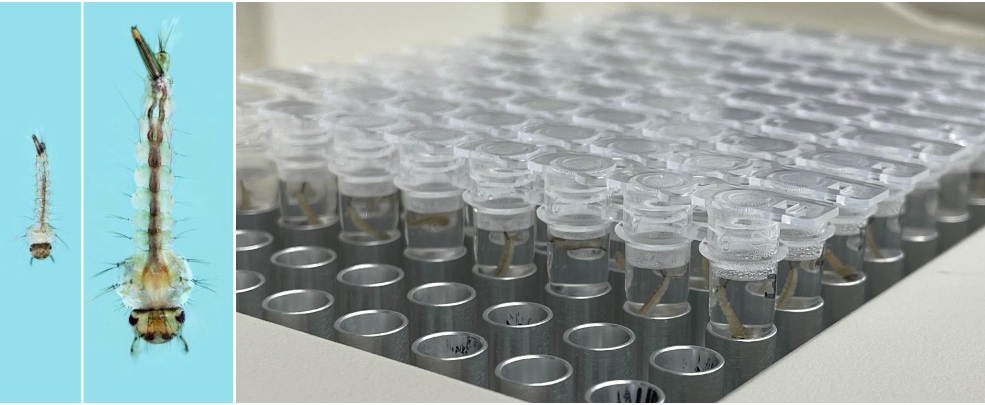 Figure 1. Culex mosquito. Photo: Ben Burgunder Figure 1. Culex mosquito. Photo: Ben Burgunder written by: Allison Huysman, Kathleen Evans & Taís Ribeiro As entomologists, we are often asked what mosquitoes are good for. These commonly hated insects - which are especially pesty during the summer months - are actually fascinating research subjects. Mosquitoes are extremely diverse, with around 3,500 species, and are also ecologically relevant. Several species are responsible for biological control (by eating other mosquito larvae that cause diseases) and others even pollinate! Unfortunately, some species drink human blood, and some of these are vectors of deadly diseases. Studying these vectors can help improve the prediction of diseases and help to control outbreaks. Here at the University of Maryland Entomology Department, students in the Fritz lab research different ways to predict the spread of Culex mosquitoes (Figure 1) and the viruses they can spread. In their Research in Progress talks, M.Sc student Ben Burgunder and Ph.D student Ben Gregory presented their work modeling the community composition and thermal tolerance of Culex mosquitoes. Community composition of Culex species in urban environments West Nile virus (WNv) is a mosquito-borne virus that can cause disease in humans, horses, and birds (Figure 2). It was first detected in the US in 1999 and quickly spread across the country via its bird hosts. The mosquitoes most responsible for the transmission of WNv in the Eastern US are Culex restuans and Culex pipiens. Because Cx. restuans populations peak in June, they are considered an early-season transmitter of WNv, while Cx. pipiens populations peak mid-season in August and September. Biologists are currently using models that group the two species to predict the occurrence of WNv. This may limit their ability to predict and reduce human disease. Recent studies have shown that although local landscape structure and human demographic characteristics are reliable predictors of WNv at the regional scale, accurate prediction of cases at the local scale remains elusive. Ben Burgunder investigated whether separating these two species could explain inaccurate model predictions. Data on mosquito species populations was collected via gravid traps in July and August 2021 and 2022 for 21 Chicago sites that had been previously used to build a model. Burgunder showed that although the community species composition varies by month, differences in a site’s species composition could not explain where the model went wrong. Burgunder is now investigating the role that annual climatic factors may have on the presence of each of the vector species in Chicago. Thermal tolerance in Culex larvae In North America, the Culex pipiens assemblage of mosquitos, composed of Cx. pipiens and Cx. quinquefasciatus, is an important part of WNv transmission. The two morphologically identical species occupy different latitudes in the United States with Cx. pipiens in the north, Cx. quinquefasciatus in the south, and a hybrid zone at intermediate latitudes. Since the two species may transmit WNv at different rates (Ciota et al., 2013), their hybridization and species distributions are important to understand. Ben Gregory is currently focused on understanding the thermal tolerances of the Cx. pipiens assemblage. These two species can breed in small human-made containers, often exposing larvae to extremely high temperatures. Gregory used individuals from populations in the south (Texas and Florida) and the north (Maine and Chicago) in a controlled experiment where larvae were exposed to increasing temperatures. He found that thermal tolerance varied along a latitudinal gradient and that populations from warmer areas are more tolerant of warmer water. Because the species distributions also vary along a latitudinal gradient, thermal tolerances may also drive hybridization between the two species, and thus WNv transmission risk. Further work will investigate how the Cx. pipiens assemblage varies in tolerance to low temperatures and how controlled laboratory results translate to findings in nature. While both students are in the early stages of their career, their research presents important steps in the study of the disease spread and the range expansion of Culex mosquitoes, ultimately improving the prediction of West Nile virus spread. We are looking forward to seeing more discoveries by both researchers.
Allison Huysman is a PhD student in the Gruner Lab studying ecology of grassland birds and insects in working landscapes. Kathleen Evans is a PhD candidate in the EspíndoLab studying plant pollinator mutualisms in an agroecosystem Taís Ribeiro is a PhD candidate in the EspíndoLab studying the ecology and evolution of oil-collecting bees in South America. References Ciota, A. T., Chin, P. A., & Kramer, L. D. (2013). The effect of hybridization of Culex pipiens complex mosquitoes on transmission of West Nile virus. Parasites & vectors, 6(1), 305. https://doi.org/10.1186/1756-3305-6-305. Comments are closed.
|
Categories
All
Archives
June 2024
|
Department of Entomology
University of Maryland
4112 Plant Sciences Building
College Park, MD 20742-4454
USA
Telephone: 301.405.3911
Fax: 301.314.9290
University of Maryland
4112 Plant Sciences Building
College Park, MD 20742-4454
USA
Telephone: 301.405.3911
Fax: 301.314.9290



 RSS Feed
RSS Feed




